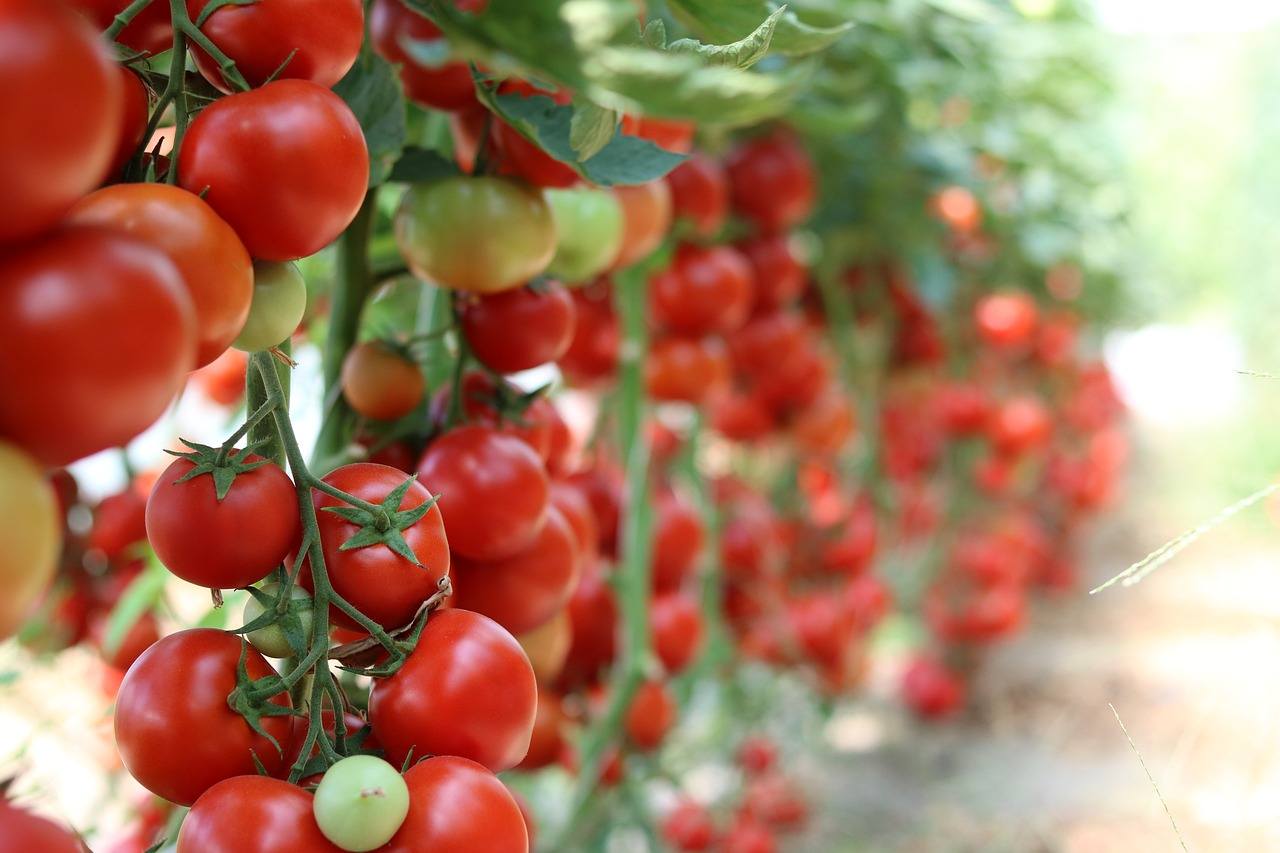
Growing Tomatoes: Planting, Sowing & Care
Tomato plants can be found in almost every hobby garden and greenhouse - they are one of our favorites in the garden and in the kitchen. With the right choice of varieties, you can also easily grow tomatoes on the balcony and enjoy your own tomatoes.
We give you helpful tips from sowing tomatoes to caring and harvesting tomatoes. There is also a guide to planting tomatoes.
This Article Contains:
- Growing Tomatoes in the Garden
- Create a Tomato Patch
- Propagating Your Own Tomatoes: A Brief Guide
- Growing Tomatoes From Seeds: Tips for Beginners
- Tomato Seedlings: Tips for Growing and Pricking
- Planting Tomatoes: From the Windowsill to the Open Air
- How to Look after Your Tomato Plants: The Right Care
- Common Diseases and Pests of Tomatoes
- Storing & Preserving Tomatoes: How to Store Tomatoes
- Frequently Asked Questions About Planting Tomatoes
Quick Overview
Growing Your Own Tomato Plant
- Light requirement: sunny
- Nutrient requirement: high
- Water requirement: high, no waterlogging
- Soil: well-drained, rich in humus and nutrients
- Germination temperature: 24 - 28 ° C/75.2 - 82.4 ° F
- Sowing: from mid-March to mid-April, if grown in greenhouse from February
- Planting out: after the last frost, in the greenhouse 3 weeks after pricking out
- Seeding depth: 0.5 - 1 cm/0.02 - 0.03 in
- Planting distance: min. 50 cm/19.7 in, depending on variety
Growing Tomatoes in the Garden
Tomatoes belong to the nightshade family. They originated in Central and South America. Today they are cultivated all over the world and are one of our favorites among the fruit vegetables.
In their native country they grow perennially. In our latitudes, they are cultivated as annuals, since the conditions for perennial cultivation are usually not met. From May, small yellow flowers form in the leaf axils. Green berry fruits develop from them within 2 months. Depending on the variety, these turn red, yellow or blackish over time. There are now over 3,000 varieties.
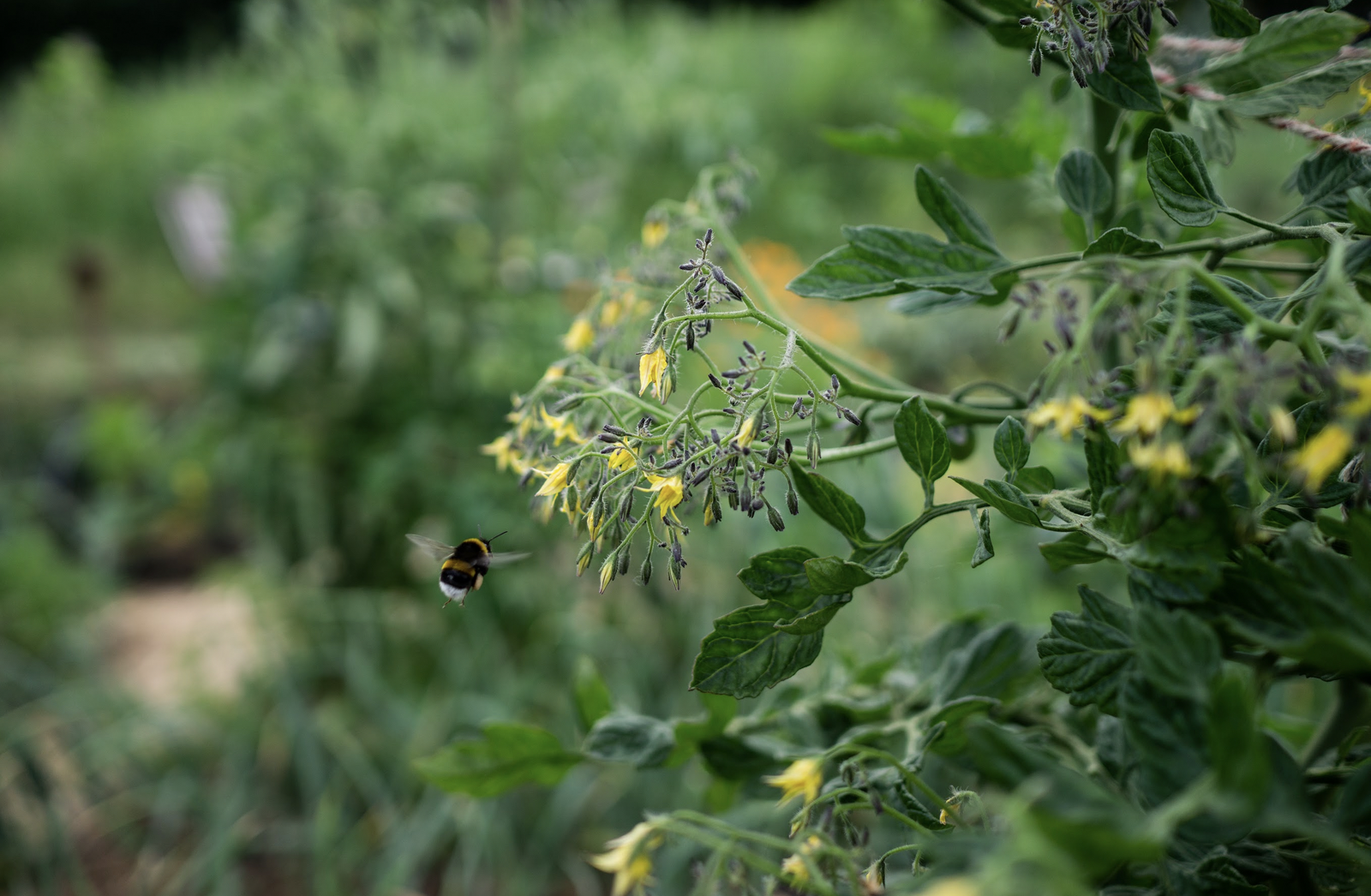
Create a Tomato Patch
Location and Soil for Tomatoes
The soil should be permeable, rich in humus and nutrients. On heavy soils with waterlogging tomatoes often react with diseases. The water must therefore always be able to drain off well. As Heavy Feeders, they have a high demand for nutrients. You can work with compost that you layer on top of the soil to prepare it for the following season.
In order for your tomato plants to thrive, you should find them a sunny, warm spot that is protected from wind and rain. In our latitudes, a greenhouse or a foil tunnel is recommended. No matter where, the tomato plants must be covered in any case. If they stand unprotected in the rain, they become more susceptible to diseases, especially fungi.
Tomato Seeds: Heirloom Tomatoes and Other Varieties
The plants develop different growth and fruit shape depending on the variety. A distinction is made between pole, bush, beef and cocktail tomatoes. Depending on the location, you should choose a suitable variety for you. More Tips on Choosing the Right Variety of Tomato Seeds can be found in the article.
Propagating Your Own Tomatoes: A Brief Guide
On the subject of growing your own tomatoes, there is also a detailed article with Many Tips on Propagating and Sowing Tomatoes. Here in the article we give you a brief overview of the most important points that you should consider when propagating your own tomato seedlings.
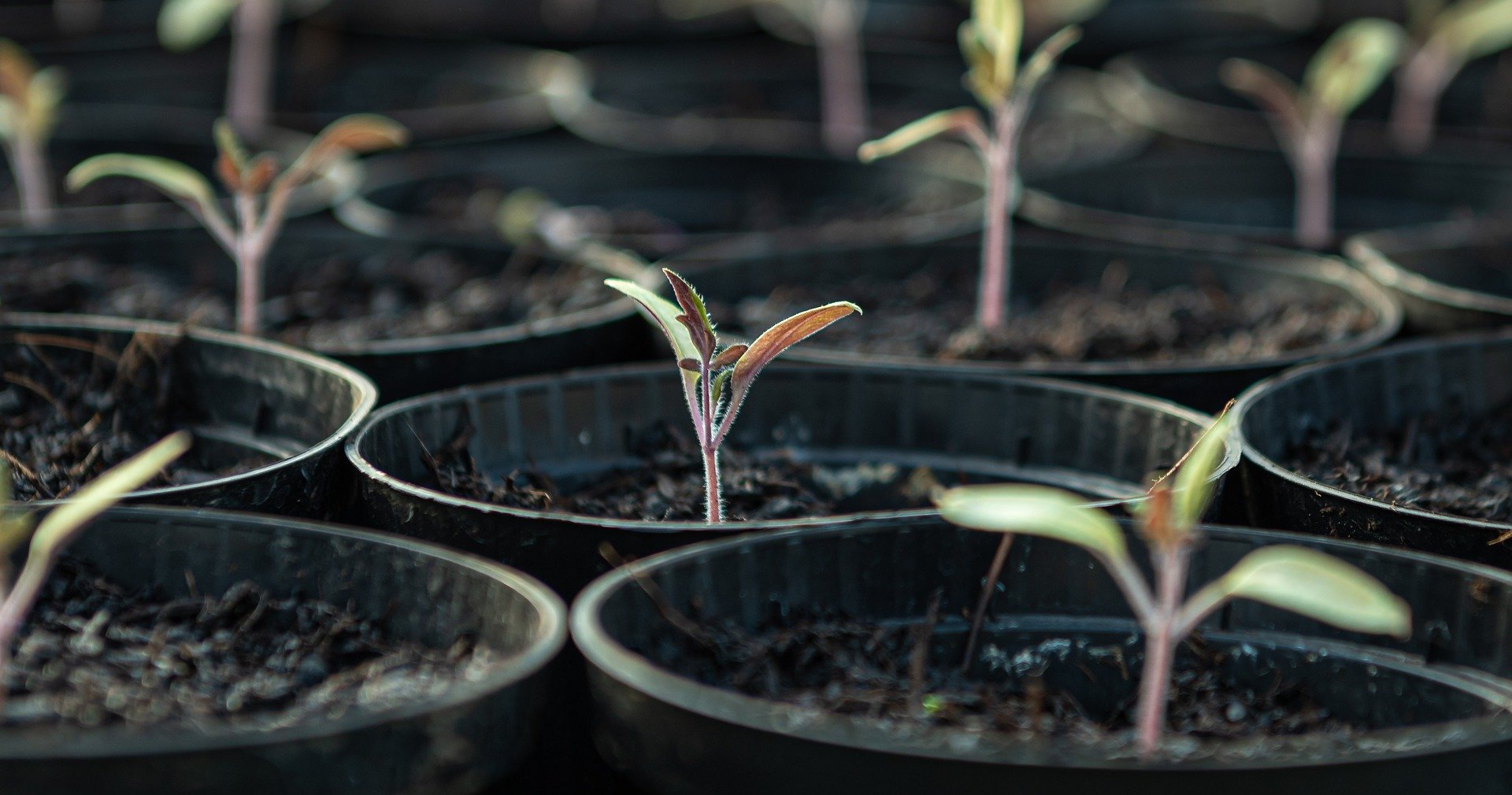
Growing Tomatoes From Seeds: Tips for Beginners
When to Plant Tomato Seeds?
Tomatoes are usually propagated on the windowsill from mid-March (the best sowing date for your variety can be found on the package). Growing tomatoes in the greenhouse is possible a little earlier, from February. Do not start sowing too early, because tomatoes need a lot of light and otherwise they will die!
How to Grow Tomatoes From Seeds?
- Place 2 to 3 seeds in a pot about 0.5 to 1 cm/0.02 to 0.03 in deep in the soil
- Optimal germination temperature is between 24 and 28 °C/75 and 82 °F
- Germination time is about 7 to 14 days
Tomato Seedlings: Tips for Growing and Pricking
How to Grow Tomatoes?
- After germination seedlings need a cooler place with about 15 °C/59 °F. For good growth, the ratio of light and heat must be right, otherwise the tomato plants will rot!
- Regular watering is very important. In the beginning, spray the seeds 2 times a day. After pricking the seedlings, you can then water normally. But be careful: Tomatoes do not like waterlogging!
When and How to Prick Tomato Seedlings?
- About 2 to 3 weeks after sowing, you can Prick Out Your Tomato Seedlings.. This means that each seedling gets its own pot.
- The first two true leaves after the cotyledons should already be developed or beginning to show.
- Set the seedlings deeper into the soil than before to give them more stability.
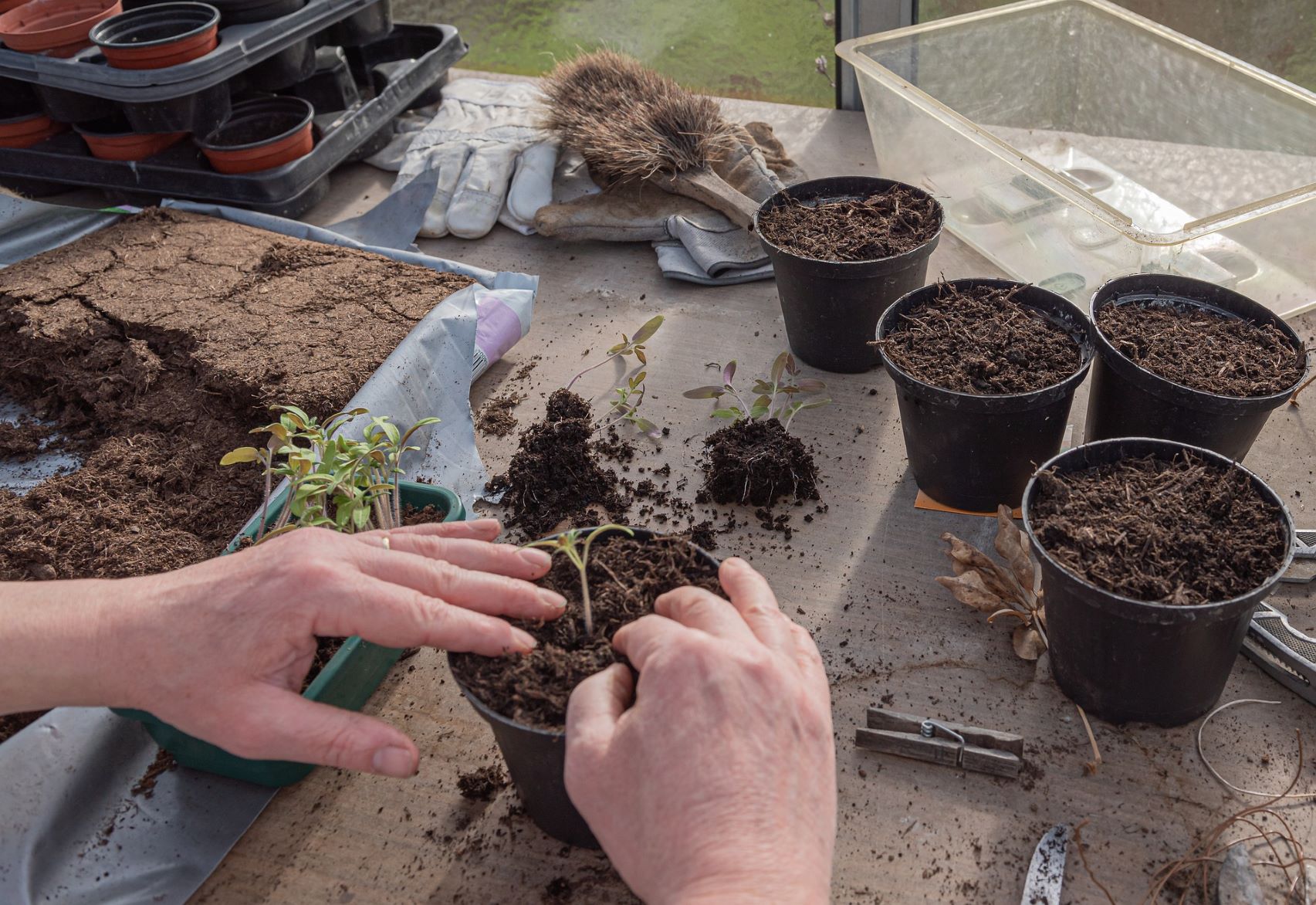
Planting Tomatoes: From the Windowsill to the Open Air
Hardening Tomatoes Before Exposure
You should definitely harden off your tomato plants before planting them out. This is especially true if you plant them outdoors. The plant must first get used to environmental conditions such as wind and direct sunlight. To do this, place the plants outdoors every day for about a week. At the beginning in a shady place and after some time in the direct sun. Extend the time spent outdoors every day.
When and How to Plant Tomatoes?
After the last frosts (usually in mid-May after the Ice Saints), the tomato plants can go outdoors. If you have a greenhouse, you can plant your tomatoes there about 3 weeks after pricking.
Planting Tomatoes: Tips & Tricks
- Prepare the soil well with compost and loosen it with a digging fork (no digging!).
- Plant your tomato seedlings deeper into the soil than before.
- Keep the planting distance. This varies depending on the variety, but should be at least 50 cm/19.7 in. Here you can also read about other plant requirements and tips on cultivation.

Learn More About Tomatoes in Our Library
In our library, you will find information about various tomato varieties, including their growing periods, planting, and harvesting tips. Additionally, you will find information on companion plants to help you plan a mixed culture garden.
View Library Now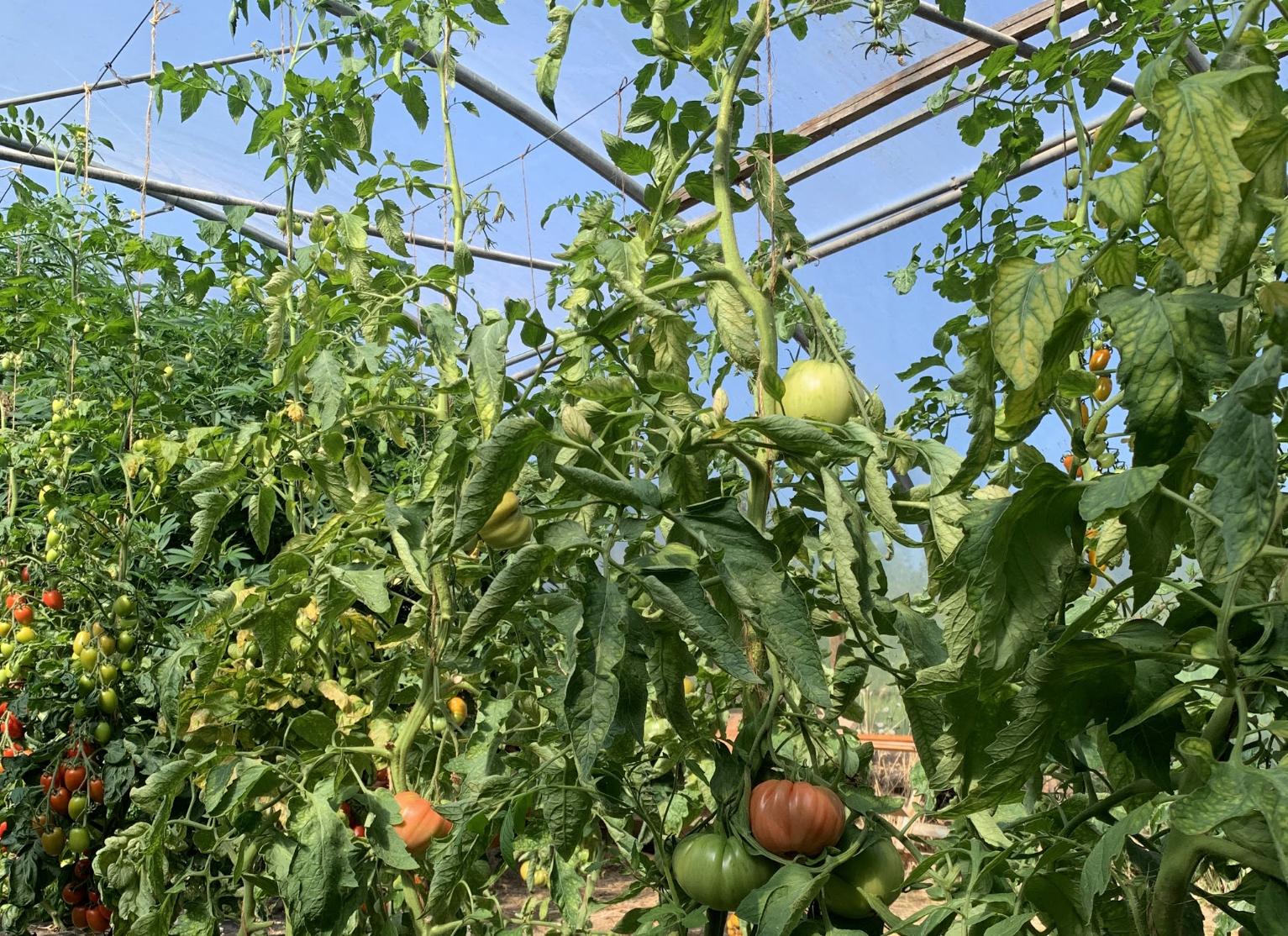
How to Look after Your Tomato Plants: The Right Care
There is a lot to consider when caring for tomatoes: In addition to regular fertilizing and watering, tomato plants are also partly thinned out and defoliated. In our article on caring for tomato plants you will find tips on how to properly care for tomatoes. That way you are guaranteed to be rewarded with a bountiful harvest!
Fertilizing Tomatoes
Tomatoes are very thirsty plants, and continuous, even water supply is very important. Too little or too much water affects their growth. A sign of drought stress is severely curled leaves. If your tomato is already suffering from drought, you need to water it carefully. An extreme difference in water supply can cause ripening tomatoes to burst. To prevent fungal diseases, you should always water from below. The leaves should not get any water, as they can otherwise burn from direct sunlight.
Attaching a Support
Especially stake tomatoes appreciate a trellis or support aid. Small, bushy wild or bush tomatoes, on the other hand, can manage without one. Suitable supports include wooden stakes, spiral stakes, or strings.
Additionally, tie your tomato plants to the support aids. When tying, be careful not to injure them. Diseases and pathogens can more easily enter through injured areas. Spiral stakes are particularly suitable for this purpose. Here, tying becomes unnecessary as tomatoes grow counterclockwise and are optimally stabilized by spiral stakes.
Pruning and Defoliating Tomatoes
Further important care measures for tomatoes include pinching out (also known as removing side shoots) and defoliation to optimize growth and fruit production. When pinching out, you remove side shoots that grow in the leaf axils of older shoots. This encourages the plants to concentrate their energy on the main stem and fruit production, thereby increasing your harvest. Pinching out is particularly common with staked tomatoes. Defoliation involves removing the lower, ground-level leaves of the tomato plant up to the first fruit set. This improves air circulation and makes the plants less susceptible to fungal diseases.
Pollinating Tomatoes
Especially in a greenhouse, you can significantly increase your harvest if you assist in the pollination of your tomato plants. Outdoors, there are usually enough insects around to pollinate the hermaphroditic tomato flowers. However, these insects are often absent in a greenhouse. Therefore, during the flowering period, you should walk through your greenhouse and shake the flower clusters vigorously but carefully. Alternatively, you can use an electric toothbrush and hold it against the flower heads.
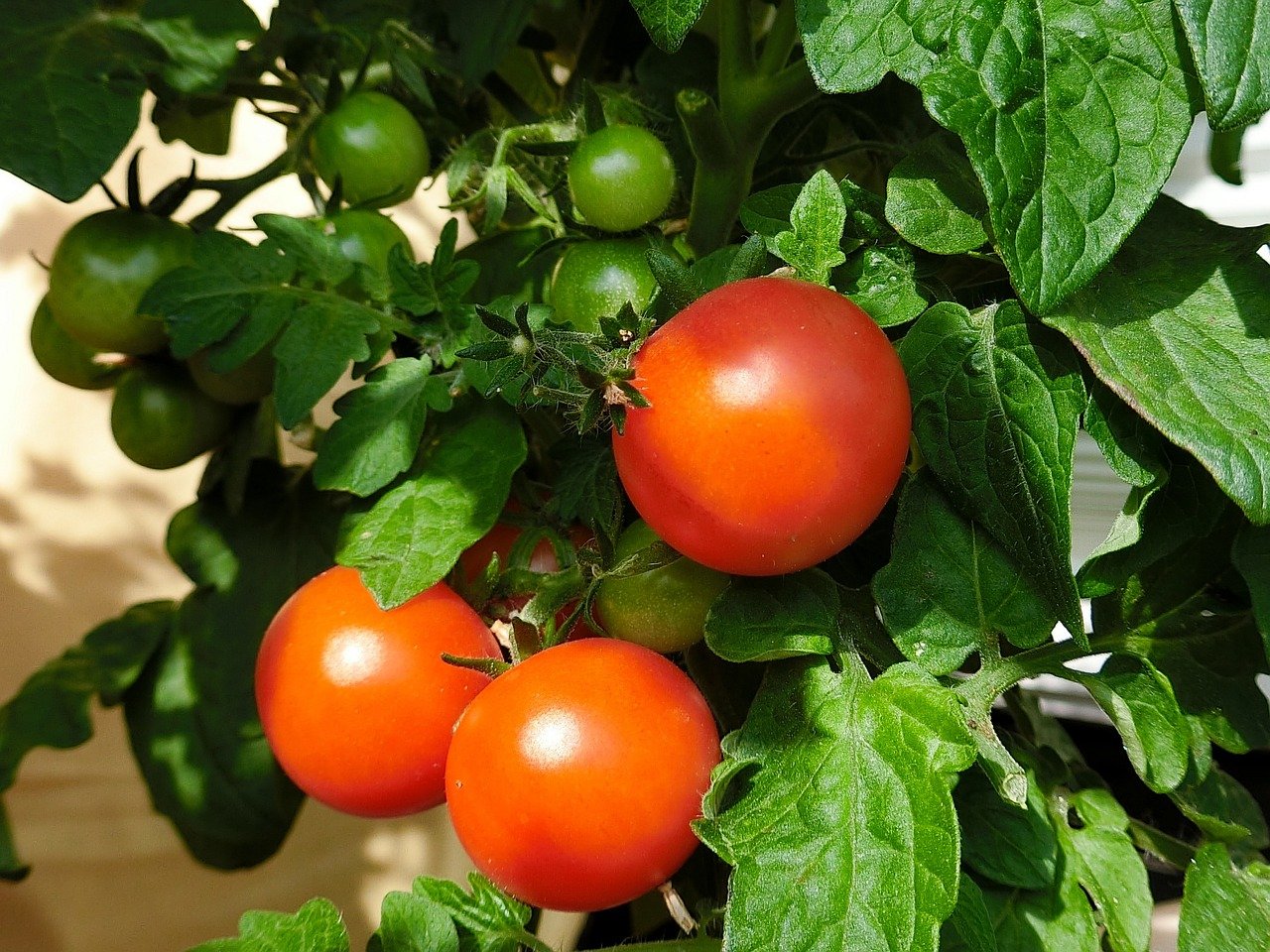
Common Diseases and Pests of Tomatoes
There are several diseases and pests that are often found on tomato plants. Below is an overview of these diseases:
- Late Blight: A fungal disease in which gray-green to brown-black spots spread on the leaves, stems and fruits. Often develops when the weather is too wet.
- Fruit and stem rot: this fungus first shows up at the base of stems on older plants and then spreads. As a result, water transport in the stem no longer functions properly and fruits and leaves begin to wither.
- Drought spot disease: This fungal disease spreads on the leaves from the bottom up. Affected leaves and stems develop roundish, gray-brown spots and eventually curl up. The fruits become soft and mushy.
- Powdery Mildew: Typical mealy-white coating on the leaves and stems. Leaves wilt and fall off.
- Tomato leaf miner fly: This fly lays its eggs on and under the leaves. The larvae then eat their way through the inside of the leaves, leaving behind clearly visible tunnels. Beneficial insects, such as ichneumon wasps, help control it naturally.
- Tomato Moth: The tomato moth caterpillar loves to eat tomato leaves and fruit. You can recognize them by their green-brown coloring with thin yellow stripes. If you have an infestation, you can simply collect and relocate them.
- Tomato rust mite: In an infestation, the leaves turn yellow and the main shoots and stems turn brown. Young fruits burst open and fall off. Unfortunately, nothing can help here and the plant should be disposed of quickly.
To prevent diseases, it can be helpful to plant a mixed culture. Companion plants support each other for healthy growth and increase biodiversity in the garden bed. You can find everything about Mixed Culture With Tomatoes in this article. In addition to a table of companion plants, you will also find everything you need to know about crop rotation and succession planting. We have also prepared a planting plan for a mixed culture in the tomato bed for you.
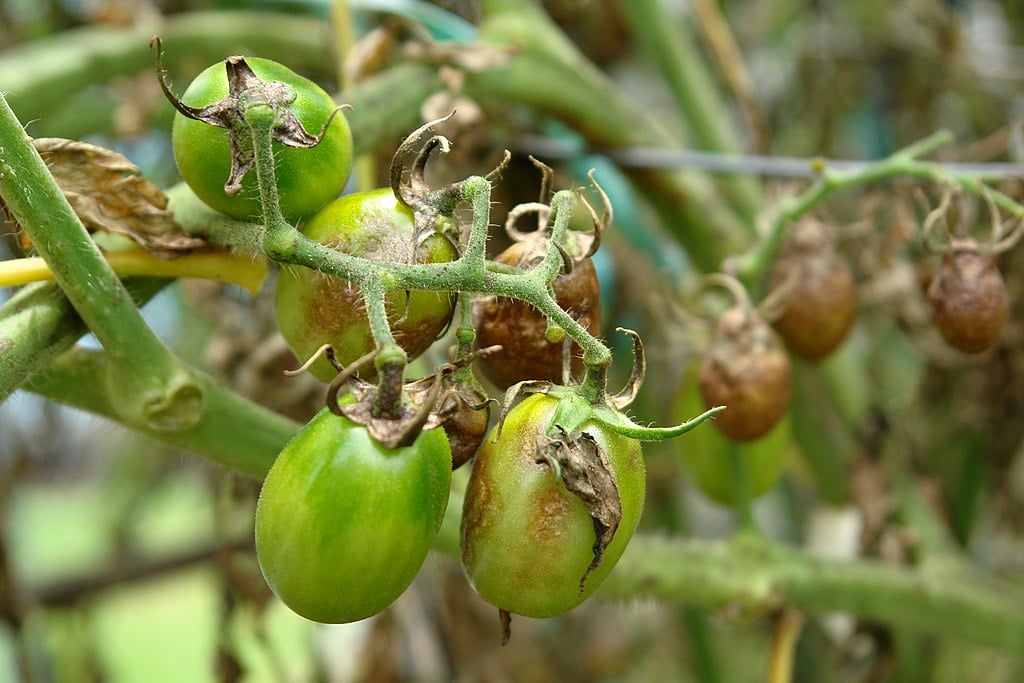
The reason for growth disorders are not always diseases or pests that trigger them. Tomatoes are sensitive to a wide variety of environmental influences and also to poor care. For example, an imbalanced supply of nutrients can cause blossom end rot (calcium deficiency) or spoon leaves (overfertilization). Prevention and good care from the beginning is best here. That way you'll get the most enjoyment out of your tomato plants.
To Identify and Fight the Right Plant Disease, you can find instructions here in the article. In this way you can find out whether care errors or environmental influences are responsible for the symptoms.
Storing & Preserving Tomatoes: How to Store Tomatoes
Ripe tomatoes are best stored in an open tray in a dark, airy place (e.g. ventilated cellar or storage room). Here, the temperatures should ideally be between 12 and 18 ° C/53.6 and 64.4 ° F. Of course, this is hardly possible in midsummer. Under optimal conditions, tomatoes then remain edible for about a week.
Important: Tomatoes should not be stored in the refrigerator, as they lose their aroma after a short time.
You can harvest unripe, green tomatoes at the end of the season, i.e. before it gets wet and cool, and let them ripen. If you wait too long, it can come to strong infestation of late blight. Temperatures of 18 to 20 ° C/64.4 to 68 ° F are optimal for this. The tomatoes do not need light to ripen. If you want to store them until December, you should choose a cool and dark place (e.g. cellar).
Tomatoes can also be preserved well in many ways. You can read about the options for Preserving Your Fruits and Vegetables here.
We hope you now have everything you need to grow tomatoes yourself.
For questions and comments, feel free to write to us at [email protected] or share your experiences with us on social media. To never miss an article again, follow us on Instagram and Facebook or sign up directly for our newsletter.
Want to get helpful gardening tips and plan your own beds optimally all year round? Then register here or download the Fryd app for Android or iOS.
Fryd - Your digital bed planner
Cover image by Dani California on unsplash.

Marie
Marie is an agronomist. She is particularly interested in the sustainable and organic cultivation of vegetables and other plants. In her own garden, she gained experience and likes to try things out to learn from nature. She is particularly interested in the values and principles of permaculture, in order to contribute not only to the well-being of nature, but also to the well-being of people and future generations.
Learn MoreCurrent Topics in the Community
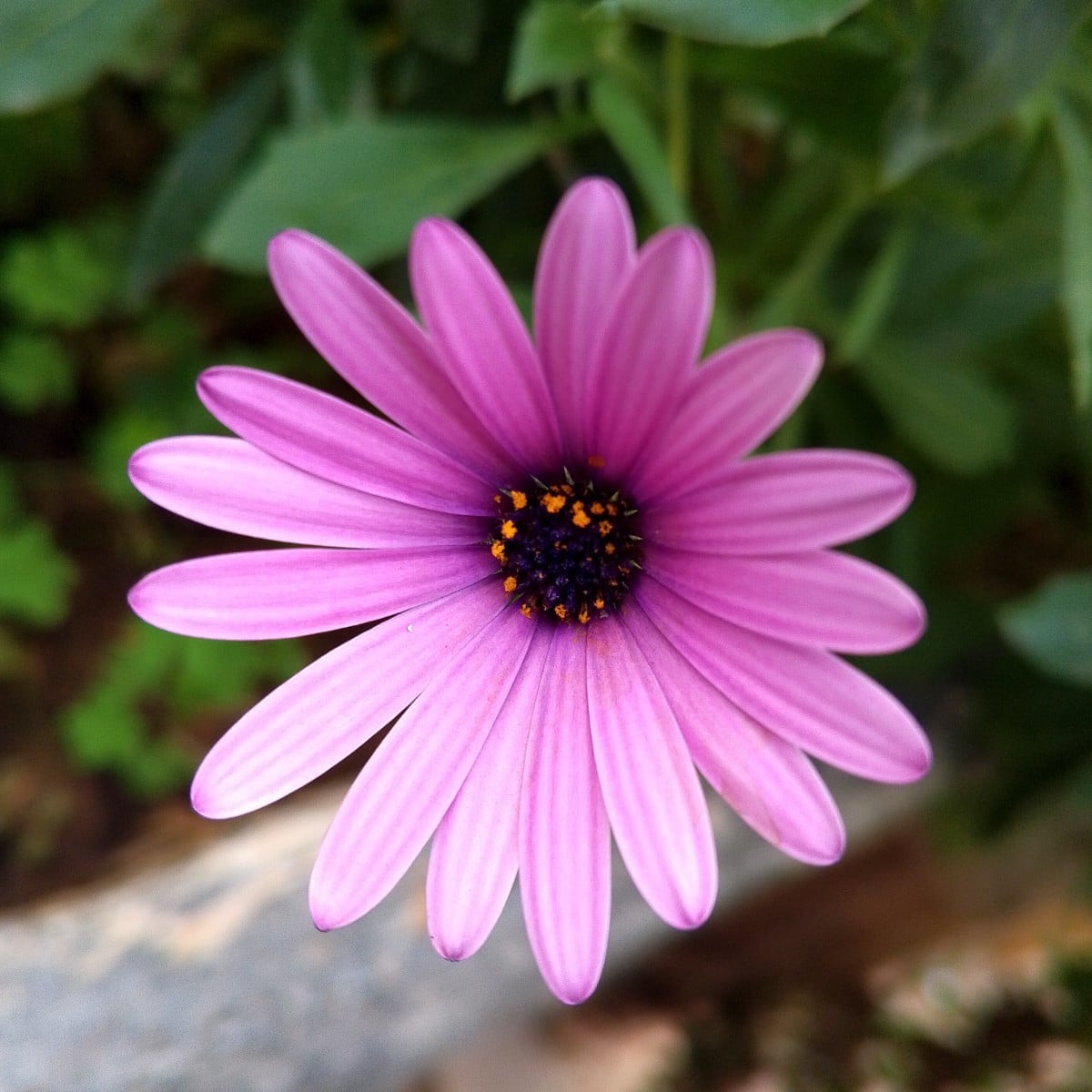
I found this in the street 🌼🌺 i dont know its name

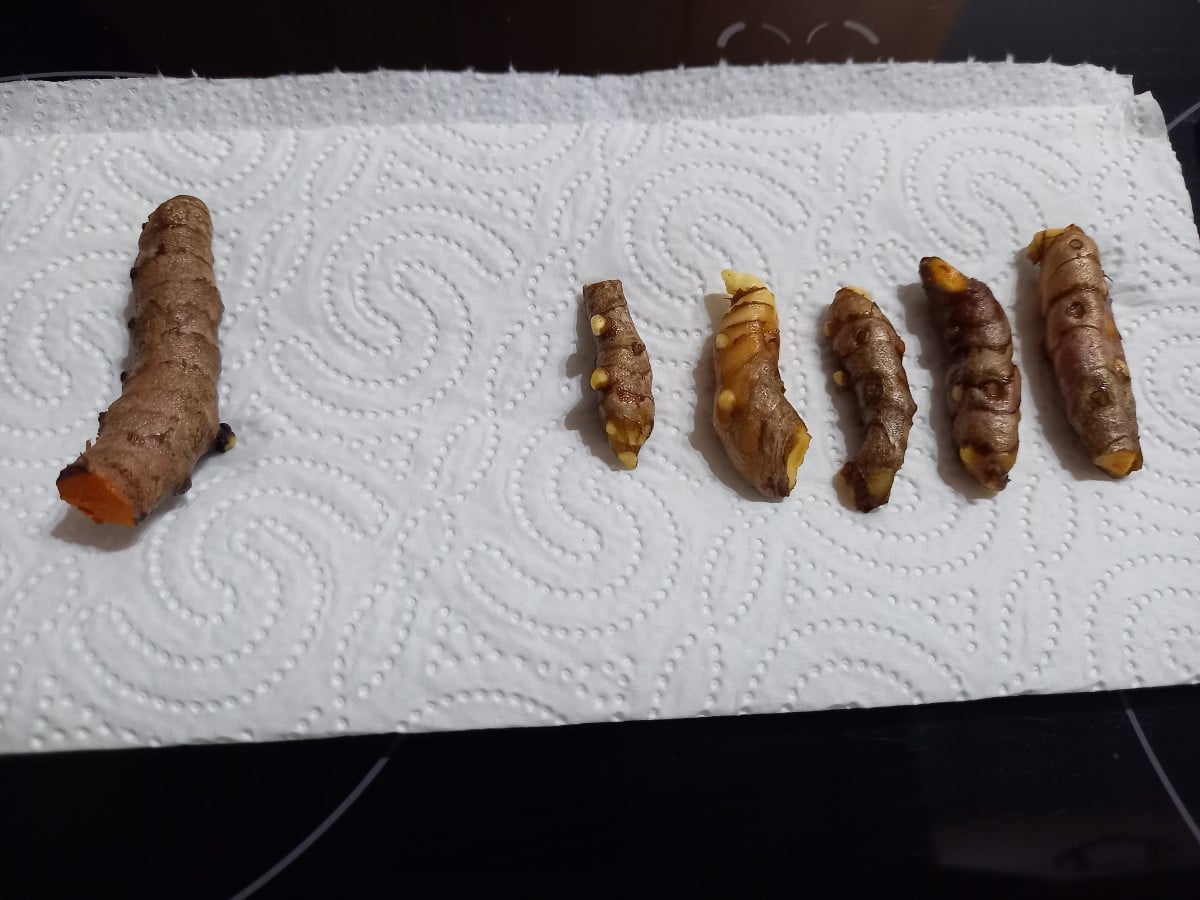
Liked 4 times
Hello folks, Today, after almost a year, I took my turmeric plant out of the flower pot that was on our windowsill. I think it's not bad for a 14x14 pot without any special care. On the left is the mother rhizome, which is also edible.
Show 2 answers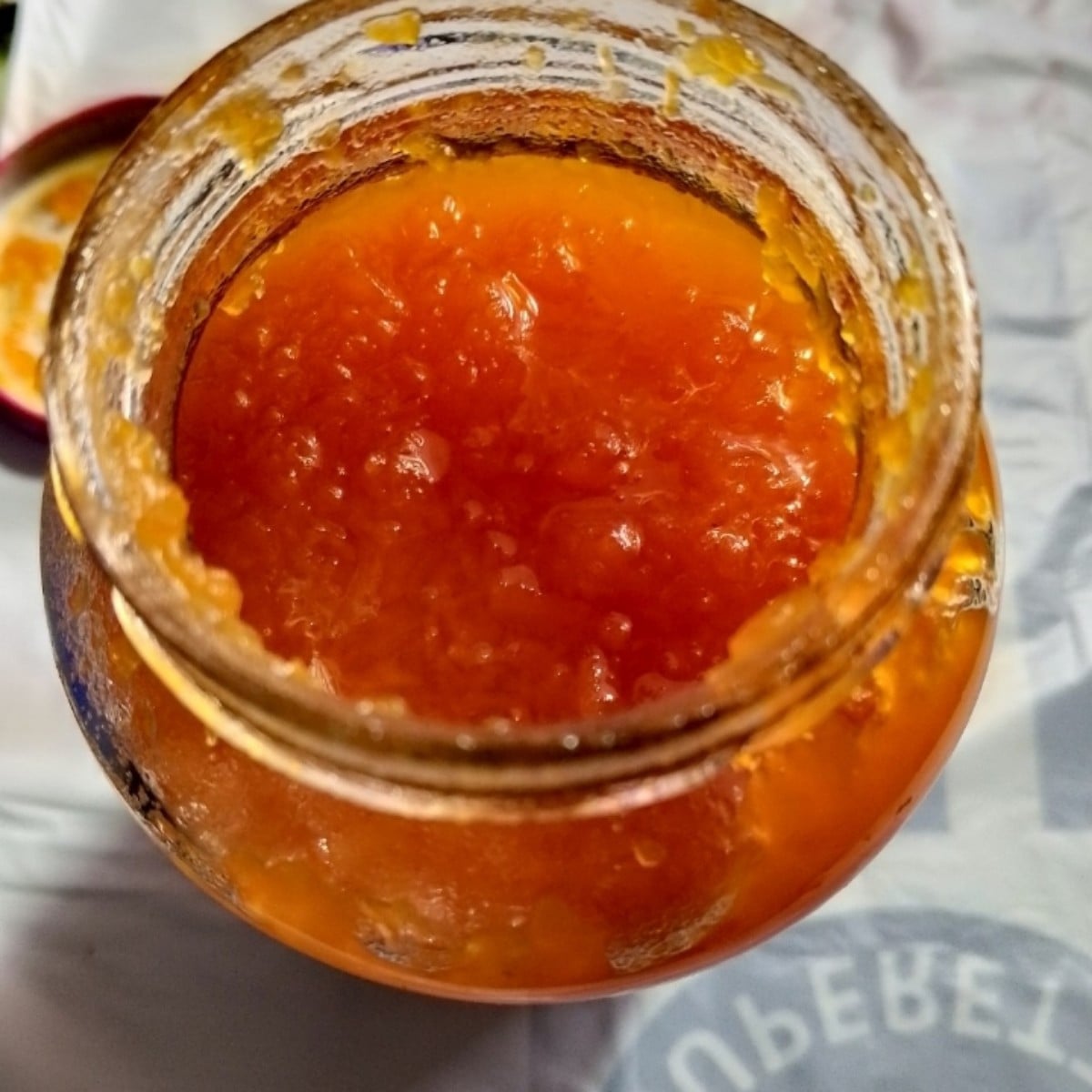
Liked 13 times
Pumpkin jam Cinnamon sticks are added for flavor. It tastes great, do you make pumpkin jam in Europe?
Show 8 answersPopular Articles

Overwintering Parsley: How to Do It Successfully

How to Grow Lettuce in Winter: Varieties, Sowing, Harvesting

Growing Sage Plant: Tips for Sowing and Harvesting

What Herbs Can Be Planted Together?

Create & Design a Permaculture Garden

Overwintering Plants: Tubs, Pots and Raised Beds

Pruning, Fertilizing & Propagating Currants: Care Tips

Pruning Raspberries: How to Do It

Vegetable Garden With Greenhouse: How to Use Greenhouse Effect

Winterizing Beds and the Garden: How to Do It
FAQ
What is the best month to plant tomatoes?
May to June are the best months to plant tomatoes outside, in the greenhouse tomatoes can be planted from April. Tomatoes are susceptible to frost and should only be planted outside once the last frost has passed.
How often do you water tomatoes?
Depending on the temperatures, tomatoes should be watered every 1-3 days. Tomatoes grow deep roots and if the roots are deep enough some people don't water their tomatoes at all.
What plants go well with tomatoes?
Companion plants for tomatoes are beans, chili, currants, nasturtium, garlic, celeriac, coal, leeks, corn, carrots, peppers, lettuce, soybeans, asparagus, spinach, root parsley and onions.
Can tomatoes be grown in pots?
Yes, tomatoes can be grown well in pots. It is best however, to choose varieties that have been bred to be planted in pots to ensure the best results.